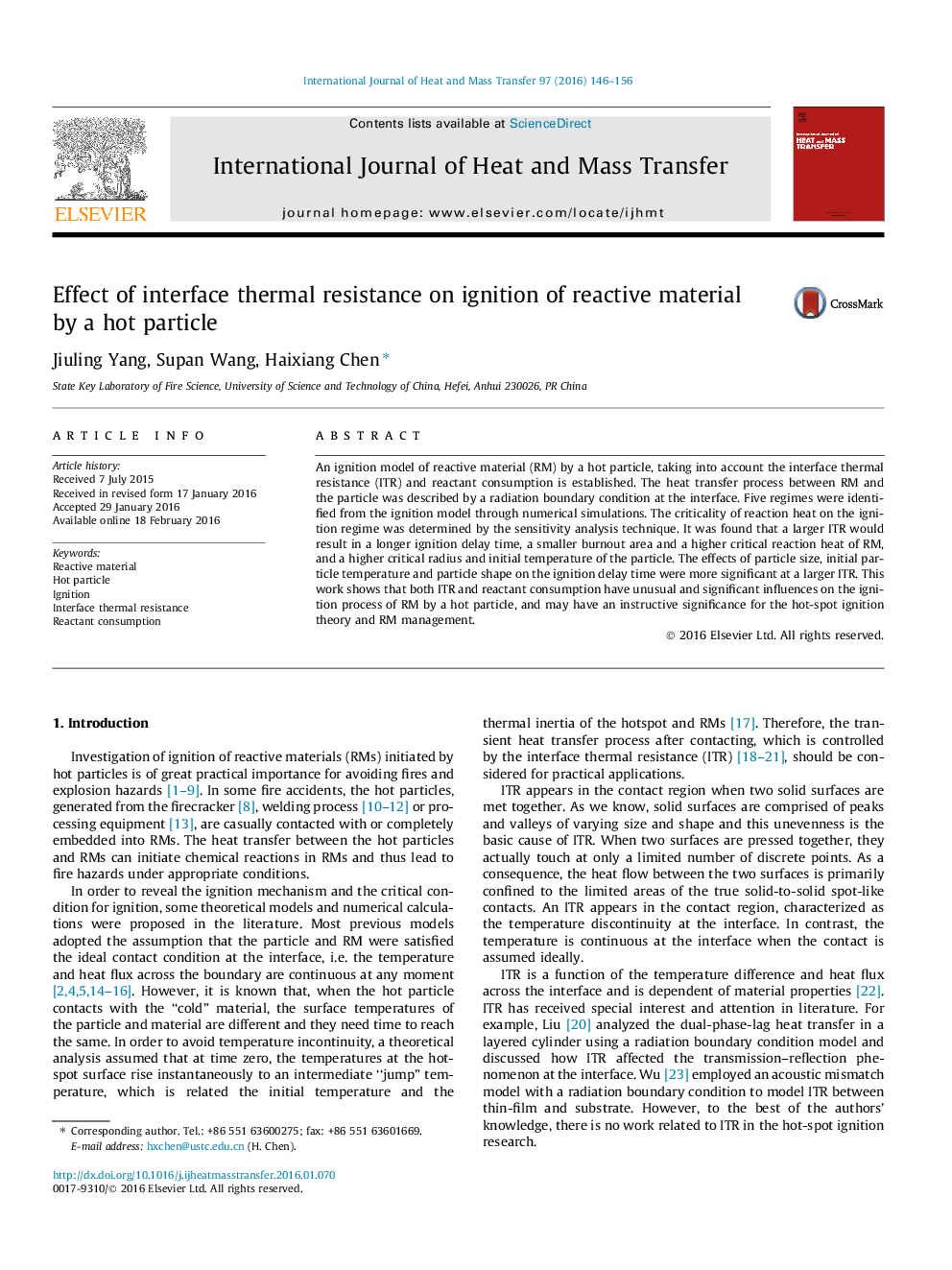| Article ID | Journal | Published Year | Pages | File Type |
|---|---|---|---|---|
| 7055545 | International Journal of Heat and Mass Transfer | 2016 | 11 Pages |
Abstract
An ignition model of reactive material (RM) by a hot particle, taking into account the interface thermal resistance (ITR) and reactant consumption is established. The heat transfer process between RM and the particle was described by a radiation boundary condition at the interface. Five regimes were identified from the ignition model through numerical simulations. The criticality of reaction heat on the ignition regime was determined by the sensitivity analysis technique. It was found that a larger ITR would result in a longer ignition delay time, a smaller burnout area and a higher critical reaction heat of RM, and a higher critical radius and initial temperature of the particle. The effects of particle size, initial particle temperature and particle shape on the ignition delay time were more significant at a larger ITR. This work shows that both ITR and reactant consumption have unusual and significant influences on the ignition process of RM by a hot particle, and may have an instructive significance for the hot-spot ignition theory and RM management.
Related Topics
Physical Sciences and Engineering
Chemical Engineering
Fluid Flow and Transfer Processes
Authors
Jiuling Yang, Supan Wang, Haixiang Chen,
